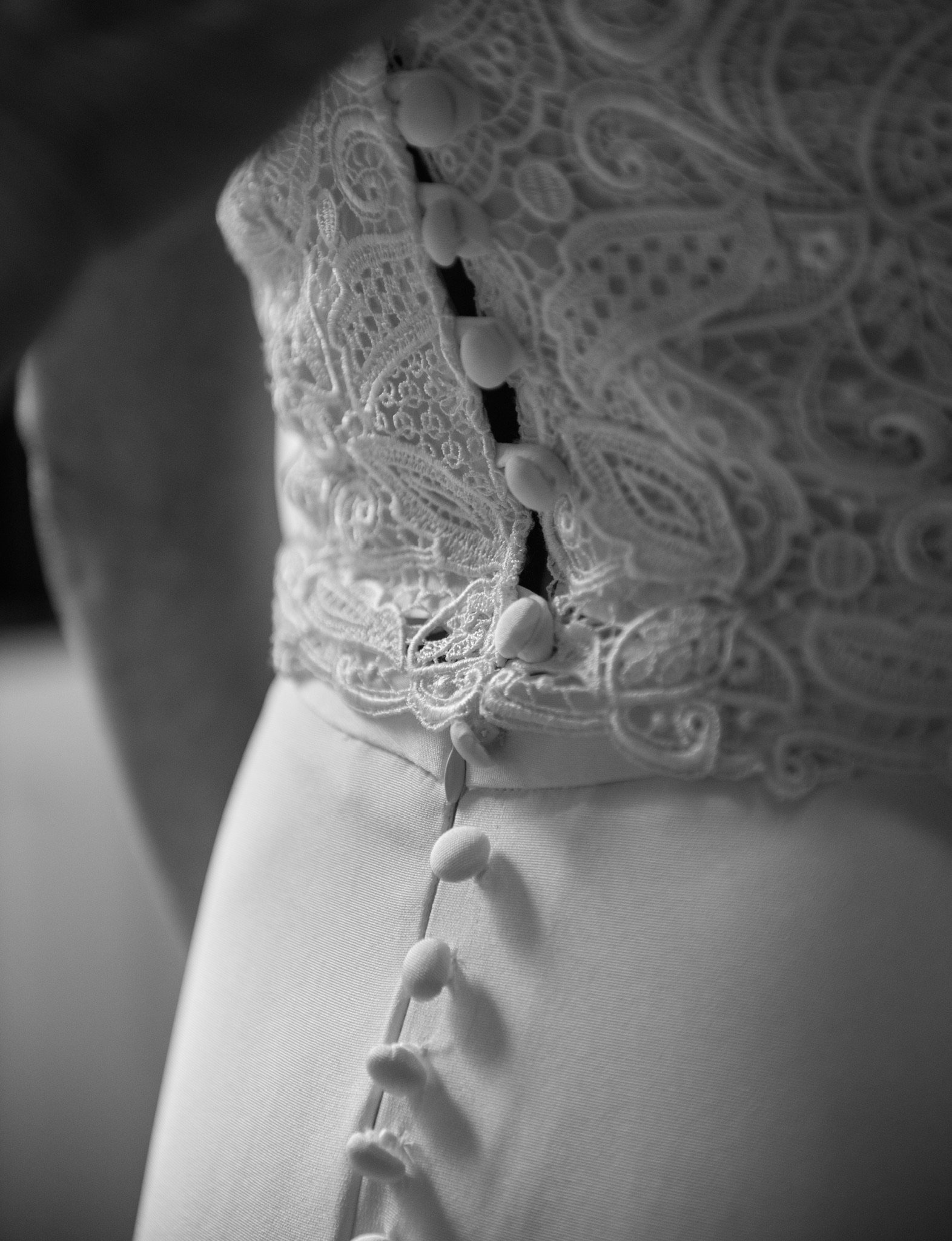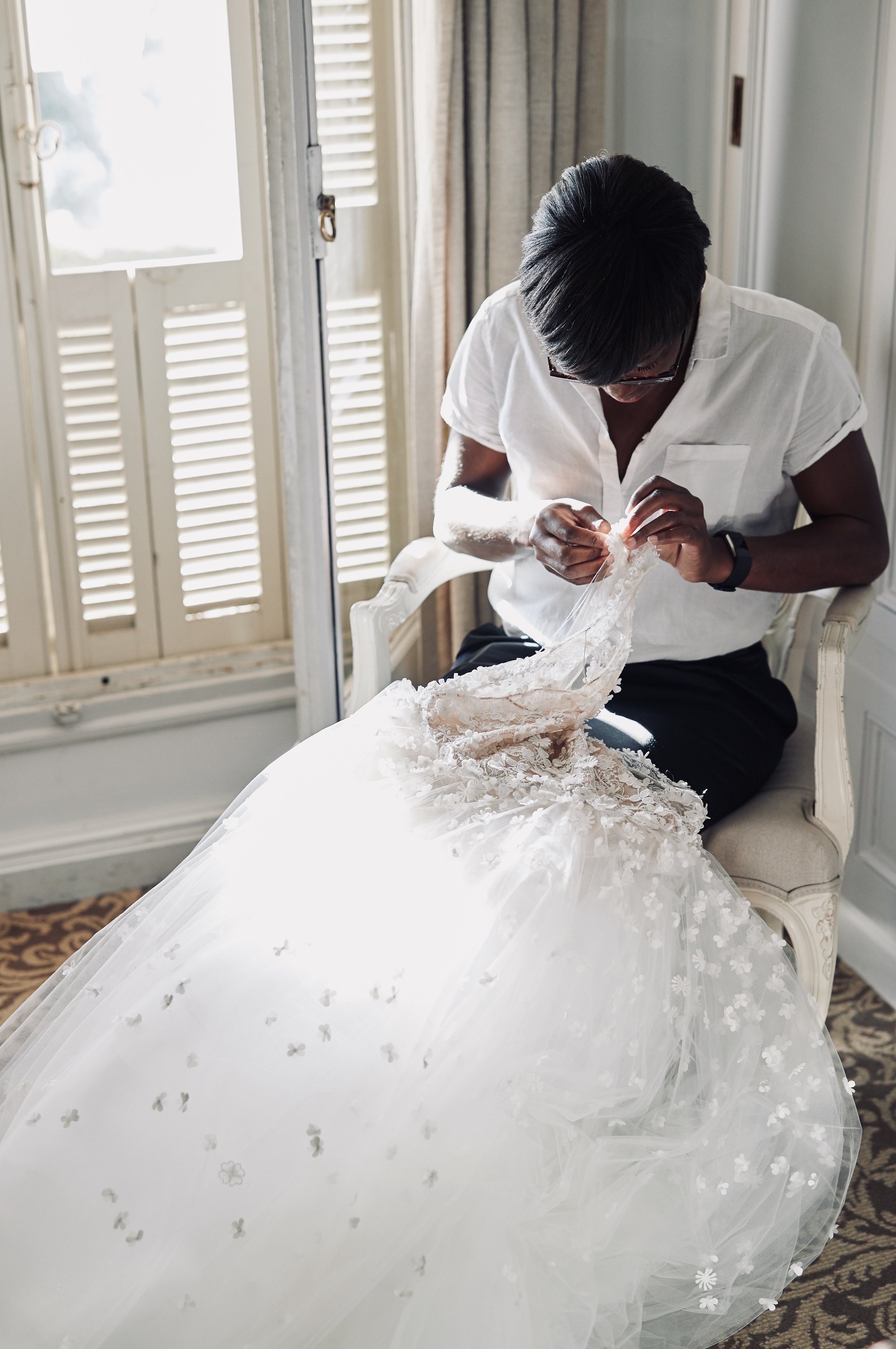What to Know About Bridal Alterations
So you’ve found your dream wedding dress, congratulations! It’s no mean feat with the gorgeous selection of gowns available! So what next?
If you’re lucky enough to find a dress that fits you off-the-rack that’s wonderful! You’re all set to walk down the aisle.
But, what if your dress needs some adjustments? Don’t worry, that’s perfectly normal! But after spending so much money on your gown, should you bother spending even more money on doing adjustments? Read on to find out why wedding gowns need adjustments, which ones to get done, and which ones to avoid.
Why do wedding gowns need adjustments? Which alterations do you need and which ones should you avoid?
Why do wedding gowns need adjustments?
Unless you have your wedding gown custom-made to your measurements, chances are it will need at least some adjustments before it will fit you really well. But why is that?
All major fashion designers, from high-street stores like Mango and Zara, to luxury fashion houses like Oscar de la Renta and Vera Wang, use standard measurements to create their garments.
Since we’re all beautiful, unique individuals (especially you!) we don’t always fit into the fashion industries standard sizes. This varies from store to store, which is why we might find that jeans fit us perfectly in one store, whereas for a decent t-shirt we’d hit a different store. It’s no different with wedding dresses.
Should I bother spending the money to get my wedding gown adjusted?
I may be biased, but when it comes to the most important dress you’ll ever wear on the most important day of your life, you deserve to look your best!
A gown that doesn’t fit well could, at best, make you look and feel uncomfortable all day, and, at worst, cause an injury if you are tripping over your hem all day.
Which alterations should you definitely do on your wedding gown?
Your dress may not need all of these adjustments, but during your fitting, your seamstress will advise you which alterations are required to ensure your dress fits you perfectly.
Hemming
Most bridal wear designers deliberately leave lots of allowance in their hems of their dresses, so the most common bridal alteration to do is the hem. A well adjusted hem will sit just above the floor, and will allow you to walk comfortably without worrying about stepping on your dress.
Resizing
If, when you’re trying on wedding dresses, you find that you’re in between sizes, it’s best to take the dress which is slightly bigger. Even if you end up losing weight before your wedding, most wedding dresses can be resized at the waist and the hips up to 2 dress sizes while still retaining their shape and style.
Bustle
I always advise brides to use this once-in-a-lifetime opportunity to have a show-stopping train on their gown. The one and only downside to train is when it comes to having a boogie on the dancefloor in the evening. If that’s your plan, then ask your seamstress to add a bustle to your dress train. Your seamstress will be able to explain the different types of bustle and suggest the one that best suits the style of your dress.
Which alterations should you not try to make on your dress?
Resizing too much
If you’ve found your perfect wedding dress in a bridal wear boutique but the only available size is 3 sizes too big or too small, then unfortunately you haven’t quite found your perfect dress. It may sound like a great solution to just alter the size of your dress, but there are many things to consider.
Adding fabric to your dress would mean finding fabric that matches the original exactly. This is an almost impossible task for a seamstress. Even if this was possible, the best solution would always be to find a dress that fits you, or is even slightly too big. It’s easier to take fabric away, than to add fabric where there was none.
Depending on the style of your dress resizing it down too much could affect the design. Some dresses have large lace applique panels hand-sewn onto the bodice which wrap around the dress. These lace applique panels are made in certain sizes, so resizing the dress down too much may cause the lace panel to no longer sit correctly on the dress.
For best results discuss all your alteration needs with your seamstress.
How much should you budget for wedding gown alterations?
“Once you have a budget in mind, find a dress 200-300€ under budget to allow wiggle room in case alterations are needed.”
What to bring to a bridal gown alteration fitting?
At every fitting with your seamstress you should bring:
- Your wedding shoes
- The underwear you’ll be wearing on the day
- Any accessories, veil, jewellery etc
Not only will this help your seamstress to get the best possible fit on your gown, it will help you to see how your whole outfit will go together!
Where can you find a good bridal wear seamstress?
Not all seamstresses will be willing to tackle bridal wear alterations. If you’re looking for a good seamstress with lots of experience altering bridal gowns you can start by asking the boutique where you bought your gown. They will usually have a trusted seamstress in-house, or someone they use regularly that they can recommend.
Another option is to ask friends and family for recommendations. If someone you know got married recently maybe they can recommend who they used for their alterations. Be sure that the seamstress has experience working on bridal wear and gives you confidence that they know how to handle delicate fabrics, lace, tulle etc.





